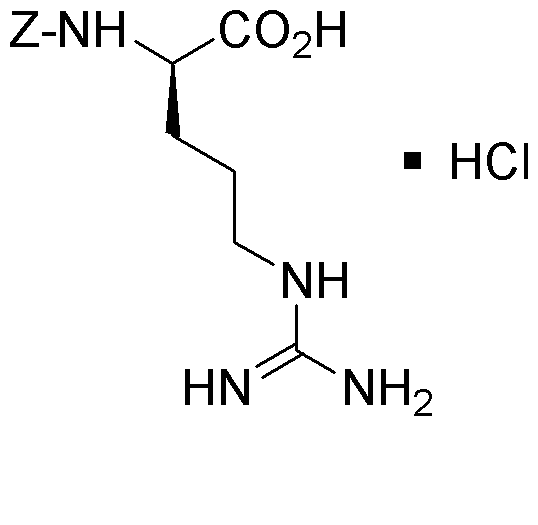Na-Z-D-arginine hydrochloride is widely utilized in research focused on:
- Peptide Synthesis: This compound serves as a key building block in the synthesis of peptides, particularly in the development of therapeutic agents targeting various diseases.
- Biochemical Research: It is used in studies related to nitric oxide production and signaling pathways, aiding researchers in understanding cardiovascular and neurobiological functions.
- Drug Development: The compound's properties make it valuable in the formulation of drugs aimed at enhancing immune responses, particularly in cancer therapies.
- Protein Engineering: Na-Z-D-arginine hydrochloride is employed in the modification of proteins to improve their stability and activity, which is crucial in biopharmaceutical applications.
- Diagnostic Applications: It can be used in the development of diagnostic assays that measure arginine levels, which are important in various metabolic disorders.
General Information
Properties
Safety and Regulations
Applications
Na-Z-D-arginine hydrochloride is widely utilized in research focused on:
- Peptide Synthesis: This compound serves as a key building block in the synthesis of peptides, particularly in the development of therapeutic agents targeting various diseases.
- Biochemical Research: It is used in studies related to nitric oxide production and signaling pathways, aiding researchers in understanding cardiovascular and neurobiological functions.
- Drug Development: The compound's properties make it valuable in the formulation of drugs aimed at enhancing immune responses, particularly in cancer therapies.
- Protein Engineering: Na-Z-D-arginine hydrochloride is employed in the modification of proteins to improve their stability and activity, which is crucial in biopharmaceutical applications.
- Diagnostic Applications: It can be used in the development of diagnostic assays that measure arginine levels, which are important in various metabolic disorders.
Documents
Safety Data Sheets (SDS)
The SDS provides comprehensive safety information on handling, storage, and disposal of the product.
Product Specification (PS)
The PS provides a comprehensive breakdown of the product’s properties, including chemical composition, physical state, purity, and storage requirements. It also details acceptable quality ranges and the product's intended applications.
Certificates of Analysis (COA)
Search for Certificates of Analysis (COA) by entering the products Lot Number. Lot and Batch Numbers can be found on a product’s label following the words ‘Lot’ or ‘Batch’.
*Catalog Number
*Lot Number
Certificates Of Origin (COO)
This COO confirms the country where the product was manufactured, and also details the materials and components used in it and whether it is derived from natural, synthetic, or other specific sources. This certificate may be required for customs, trade, and regulatory compliance.
*Catalog Number
*Lot Number
Safety Data Sheets (SDS)
The SDS provides comprehensive safety information on handling, storage, and disposal of the product.
DownloadProduct Specification (PS)
The PS provides a comprehensive breakdown of the product’s properties, including chemical composition, physical state, purity, and storage requirements. It also details acceptable quality ranges and the product's intended applications.
DownloadCertificates of Analysis (COA)
Search for Certificates of Analysis (COA) by entering the products Lot Number. Lot and Batch Numbers can be found on a product’s label following the words ‘Lot’ or ‘Batch’.
*Catalog Number
*Lot Number
Certificates Of Origin (COO)
This COO confirms the country where the product was manufactured, and also details the materials and components used in it and whether it is derived from natural, synthetic, or other specific sources. This certificate may be required for customs, trade, and regulatory compliance.


